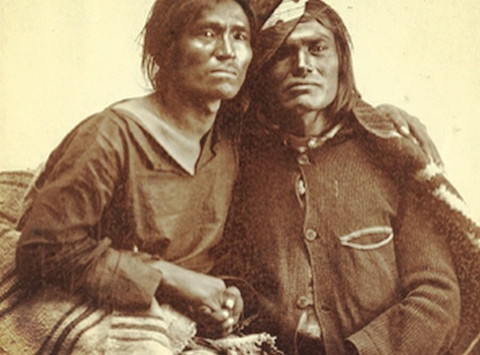Transgender

Manche Fragen kann man sich einfach nicht so beantworten, wie man ahnt, dass sie beantwortet werden müssten. Trotz meines bekannten hate speech gegen Gendersprech habe ich rein gar nichts gegen wissenschaftliche Forschung, die sich dem Thema der kulturellen Konstruktion des „Geschlechts“ widmet. Ja, Geschlecht ist nicht Biologie, sondern Kultur.
EducateInspireChange (EiC) : „Before European Christians Forced Gender Roles, Native Americans Acknowledged 5 Genders“.
Vorab: Ich habe mich ein wenig mit der Seriösität der Website beschäftigt. „A very popular alternative media organisation with a strong online community presence“ – das ist gar nichts, heiße Luft und so. „Alternative News“ riecht schlecht und nach Esoterik. Das Facebook-Profil des Gründers bestätigt meinen Verdacht: Dalai Lama und die üblichen Verdächtigen mit Hokuspokus und anderen Weisheiten.
Dennoch kann man die Thesen nutzen, um weiter zu forschen, denn die eigentliche Quelle ist Indian Country Media Network (USA):
Each tribe has their own specific term, but there was a need for a universal term that the general population could understand. The Navajo refer to Two Spirits as Nádleehí (one who is transformed), among the Lakota is Winkté (indicative of a male who has a compulsion to behave as a female), Niizh Manidoowag (two spirit) in Ojibwe, Hemaneh (half man, half woman) in Cheyenne, to name a few. As the purpose of “Two Spirit” is to be used as a universal term in the English language, it is not always translatable with the same meaning in Native languages. For example, in the Iroquois Cherokee language, there is no way to translate the term, but the Cherokee do have gender variance terms for ‘women who feel like men’ and vice versa. (…)
“Spanish Catholic monks destroyed most of the Aztec codices to eradicate traditional Native beliefs and history, including those that told of the Two Spirit tradition.” Throughout these efforts by Christians, Native Americans were forced to dress and act according to newly designated gender roles.
Sehr interessant. Ich vermutete etwas in der Art. Das würde auch die unterschiedlichen Traditionen im christlich geprägten Europa im Gegensatz etwa zu der in Thailand erklären, wo es bekanntlich ein drittes, gesellschaftlich akzeptiertes Geschlecht gibt.
Aber warum verlangt das Christentum, sich starr auf nur die zwei Geschlechter zu konzentrieren? Was ist der Vorteil? Weiß ein hier mitlesender Ethnologe mehr?
I will leave the last words to the late Lakota actor, Native rights activist and American Indian Movement co-founder Russell Means: „In my culture we have people who dress half-man, half-woman. Winkte, we call them in our language. If you are Winkte, that is an honorable term and you are a special human being and among my nation and all Plains people, we consider you a teacher of our children and are proud of what and who you are.“